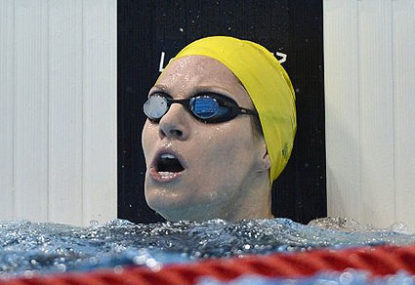JackJumpers' NBL title was special - but where does it sit among Tasmania’s top ten sporting moments?
It’s a pretty good time to be a Tasmanian sports fan right now. After years in the sporting wilderness with not much to celebrate,…

The disappointment of the London Olympics can be summed up by the image of 20-year-old Emily Seehbom with cap and goggles in one hand, the other used to wipe the tears away.
No individual gold medals, the worst performance in the pool since 1972, a team in shock and disarray.
FULL AUSTRALIAN OLYMPIC TEAM FOR RIO 2016
Three years later and Australia is a swimming powerhouse again, second on the medal tally in Kazan, a united and successful team, perfectly poised for Rio.
How was change achieved and how did that change lead to success?
It all started with an independent review and the Bluestone report, which found that “cultural factors did play a significant role” in the unpleasant experience at the London Olympics.
There was the social media obsession, the Stilnox scandal, disruption between the leadership group and the athletes, and lack of ability to stand up to pressure when it counted.
So what gave us a strong, unified swimming team in Kazan with no scandal and the ability to pull out big performances?
The first explanation is simply age. Seehbom was only 20 and Cate Campbell was still finding her feet at London. In the three years since, Australia has unearthed strong young talent in Bronte Campbell, Mitch Larkin and Cameron McEvoy, all of whom are potential individual gold medalist come Rio.
So is our current group of swimmers more talented than the squad that took to the pool in London? America would say no, arguing that Australia’s success can be put down to the omission of some of their heavyweights, no bigger than Michael Phelps.
Yet the events Australia did win in Kazan came over the established champions, with Seehbom extracting revenge on Missy Franklin three years later and Larkin and Campbell emerging victorious over world-class fields.
Talent has definitely developed and matured, yet it can only flourish if it is placed in the right culture.
The second change that occurred is how the team is managed and shifts in cultural norms. A “lonely culture” was used to describe London, so how has the swim team become more united?
For a start, restrictions and guidelines have been added to athletes’ social media usage, and tighter regulations on athlete behaviours have ensured that London will never be repeated. Stronger media scrutiny of the team has left athletes less willing to step out of line. Grant Hackett has also provided an old head who has knowledge of what it takes to succeed at the top level.
But ultimately, this cultural revolution has been led by the swimmers themselves, with Seehbom openly admitting that her social media fixation cost her in London.
They are now back to being titled ‘The Dolphins’, adding a sense of collective identity to one of Australia’s proudest sporting teams. Yet cultural enforcement cannot come from the swimmers, it must come from the administrative hierarchy, a flow-on effect that was not occurring in London.
Like any sporting failure, the first to depart after London was the coach. In 2013 Leigh Nugent was replaced by Dutch maestro Jacco Verhaeren – the man responsible for coaching Olympic champions Pieter van den Hoogenband and Inge de Bruijn.
For such a long time the head coach of the Australian swimming team has been an Australian, which was fine when Australia was a world leader in the sport. But times have changed, the rest of the world has caught up, and it was time for Australia to look beyond its shores.
Yet change also happened at an administrative level. It is, after all, the administration and coaches who develop the rules and standards that were so abused in London. CEO Mark Anderson took over in 2013 and has shown why Hockey Australia flourished under his leadership.
Yet leadership is only as good as the culture and the talent of swimmers who participate, the reason why each element is only successful when combined together, a puzzle that was almost complete is Kazan, but still has some minor figuring out to do.
With these changes the dolphins are perfectly poised for Rio in a year’s time. The Olympics are the pinnacle of the sport and will be history’s supreme judge.